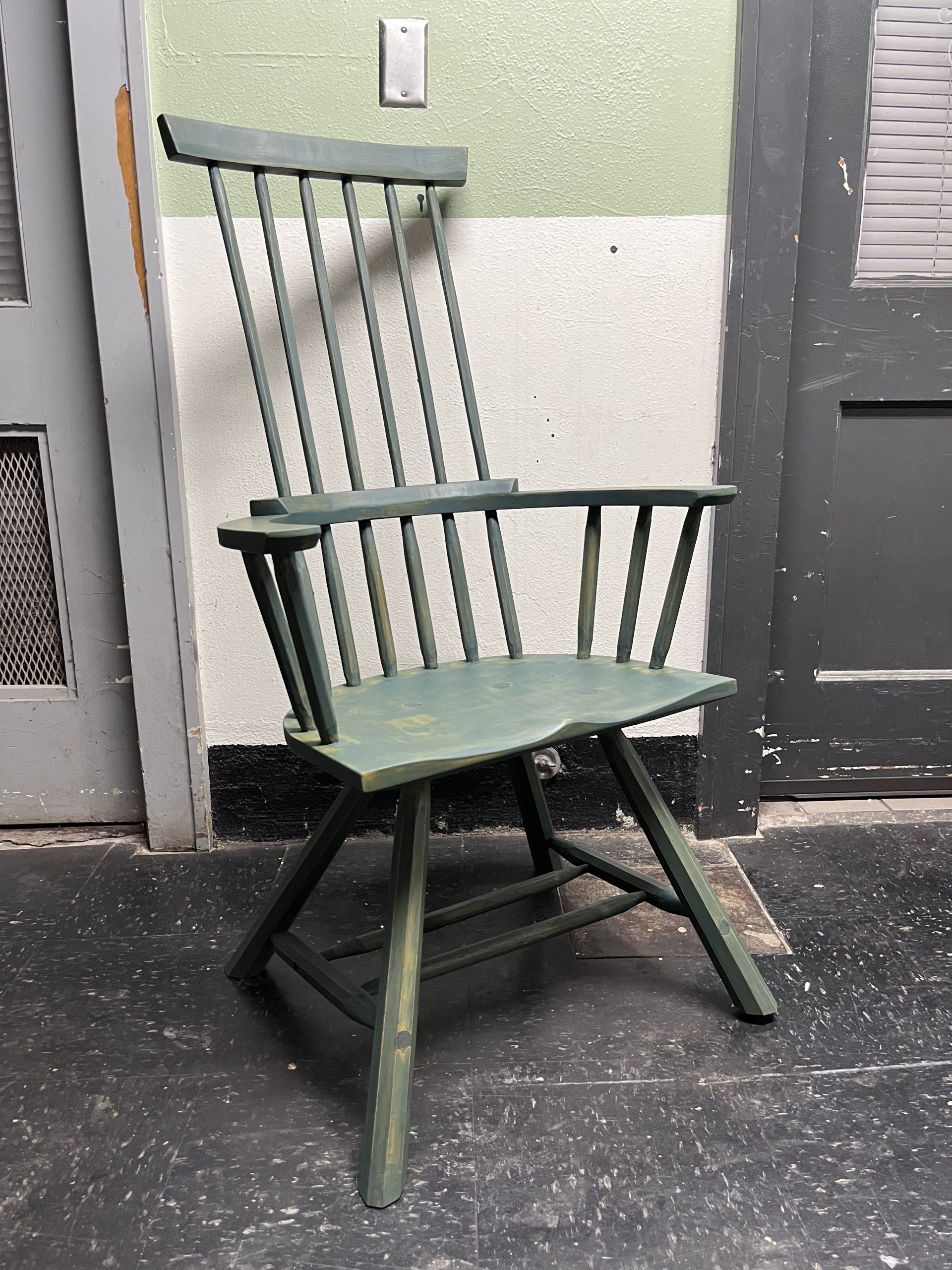
Up over my assembly table, I’ve got a small wall-hanging bookshelf I knocked together in an afternoon. This is where I keep the woodworking books that I reference when I’m in the shop.

The most significant book in my collection is The Anarchist’s Design Book by Christopher Schwarz. You’ll see Schwarz come up a lot in my blog posts, he’s my biggest inspiration when it comes to woodworking. The Design Book lays out a plan for how everyday people can build long-lasting and high quality furniture for themselves, without access to tens of thousands of dollars of tools. The book shows how making furniture can be approachable for anyone, without a massive tool collection or dedicated workshop or formal training.
This approach really resonates with me. I’ve never liked the quality of furniture you buy in stores, even higher end pieces. They’re often built from lower quality materials with bad joinery. Chair legs work loose over a few years, the finish wears through, repair becomes difficult or impossible because you’ll never match that wood or finish combination. Schwarz’s approach is to build simpler furniture forms with quality joinery, out of easy to find woods and inexpensive tools. That’s something anyone can do for themselves, and repair is easy when you can easily buy the very same wood and tools that made the furniture in the first place. This book has had a massive influence on how I build furniture.

Next up is The Essential Woodworker by Robert Wearing. I think of this like an introductory manual to how professional woodworking was done prior to the introduction of machines as the primary type of tool. It describes how to construct a box and a table using hand tools in great depth. Since pretty much all furniture takes one of those two forms, you can extrapolate out from those basic instructions to your own needs and designs. It introduces each tool, how to set it up and keep it sharp, and how to use it, and how those techniques come together to end up with a finished product. If you want to get down to the nuts & bolts of how to build furniture without a huge machine shop, this is the place to start.

The last book I consider super important for foundational woodworking knowledge is Understanding Wood Finishing by Robert Flexner. Which finish you choose and how you apply it is one of the most important factors in how the final product will turn out. Flexner goes over all the common types of finish, what they look like on the end product, how each finish actually functions, and how best to apply them. It’s still up to you to choose which finish works best for your project, but this book lays the groundwork you need to make that decision.
